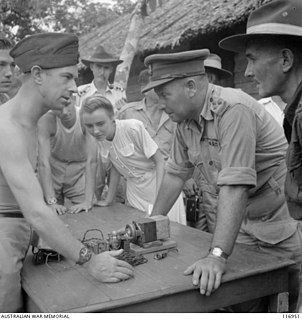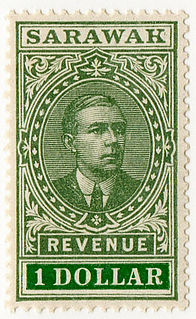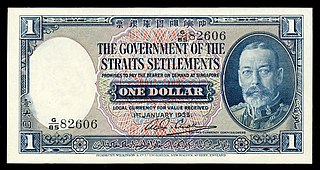 W
WThe Raj of Sarawak, also State of Sarawak, was an independent state, and later a British protectorate, located in the northwestern part of the island of Borneo. It was established as an independent state from a series of land concessions acquired by an Englishman, James Brooke, from the Sultanate of Brunei. Sarawak received recognition as an independent state from the United States in 1850, and from the United Kingdom in 1864.
 W
WThe anti-cession movement of Sarawak was a movement in Sarawak to fight against the British attempt to govern Sarawak as a crown colony rather than a protectorate ruled by the White Rajahs. The movement lasted from 1 July 1946 until March 1950.
 W
WBatu Lintang camp at Kuching, Sarawak on the island of Borneo was a Japanese internment camp during the Second World War. It was unusual in that it housed both Allied prisoners of war (POWs) and civilian internees. The camp, which operated from March 1942 until the liberation of the camp in September 1945, was housed in buildings that were originally British Indian Army barracks. The original area was extended by the Japanese, until it covered about 50 acres. The camp population fluctuated, due to movement of prisoners between camps in Borneo, and as a result of the deaths of the prisoners. It had a maximum population of some 3,000 prisoners.
 W
WSylvia Leonora, Lady Brooke, Ranee of Sarawak, was an English aristocrat who became the consort to Sir Charles Vyner de Windt Brooke, Rajah of Sarawak, the last of the White Rajahs.
 W
WBrigadier Sir Thomas Charles Eastick, was an Australian motor engineer and army officer who rose to senior command in the Second World War. As a temporary brigadier, he was military governor of Sarawak in 1945 after taking the Japanese surrender at Kuching.
 W
WHistory of Sarawak can be traced as far as 40,000 years ago paleolithic period where the earliest evidence of human settlements is found in the Niah caves. A series of Chinese ceramics dated from 8th to 13th century AD was uncovered at the archeological site of Santubong. The coastal regions of Sarawak came under the influence of the Bruneian Empire in the 16th century. In 1839, James Brooke, a British explorer, first arrived in Sarawak. Sarawak was later governed by the Brooke family between 1841 and 1946. During World War II, it was occupied by the Japanese for three years. After the war, the last White Rajah, Charles Vyner Brooke, ceded Sarawak to Britain, and in 1946 it became a British Crown Colony. On 22 July 1963, Sarawak was granted self-government by the British. Following this, it became one of the founding members of the Federation of Malaysia, established on 16 September 1963. However, the federation was opposed by Indonesia, and this led to the three-year Indonesia–Malaysia confrontation. From 1960 to 1990, Sarawak experienced a communist insurgency.
 W
WAgnes Newton Keith was an American author best known for her three autobiographical accounts of life in North Borneo before, during, and after the Second World War. The second of these, Three Came Home, tells of her time in Japanese POW and civilian internee camps in North Borneo and Sarawak, and was made into a film of the same name in 1950. She published seven books in all.
 W
WSir Hugh Low, was a British colonial administrator and naturalist. After a long residence in various colonial roles in Labuan, he became the first successful British administrator in the Malay Peninsula where he made the first trials of Hevea rubber in the region. He is often considered the first successful British administrator in the Malay Peninsula, whose methods became models for subsequent British colonial operation in the entire South East Asia Region.
 W
WThe Battle off Mukah was a naval engagement fought in May 1862 between boats of the Sarawak and pirates. After the kidnapping of Sarawakian citizens some time before, two small gunboats encountered the pirates off Mukah on the northern coast of Borneo. In an unusual action, the Rajah Muda, Captain John Brooke, then the heir apparent to be White Rajah of Sarawak, led his force in the defeat of six pirate ships and the rescue of captured civilians.
 W
WThe White Rajahs were a dynastic monarchy of the British Brooke family, who founded and ruled the Raj of Sarawak, located on the north west coast of the island of Borneo, from 1841 to 1946. The first ruler was an Englishman James Brooke. As a reward for helping the Sultanate of Brunei fight piracy and insurgency among the indigenous peoples, he was granted the province of Kuching which was known as Sarawak Asal in 1841 and received independent kingdom status.
 W
WSarawak issued revenue stamps from 1875 to 1942 when it was an independent kingdom as well as when it was under Japanese occupation.
 W
WThe dollar was the currency of Sarawak from 1858 to 1953. It was subdivided into 100 cents. The dollar remained at par with the Straits dollar and its successor the Malayan dollar, the currency of Malaya and Singapore, from its introduction until both currencies were replaced by the Malaya and British Borneo dollar in 1953.
 W
WThe Sarawak Rangers were a para-military force founded in 1862 by the second White Rajah of the Raj of Sarawak, Charles Anthony Johnson Brooke. They evolved from the fortmen which were raised to defend Kuching in 1846. The Sarawak Rangers were first commanded by William Henry Rodway, briefly in 1862 and again from 1872 to his retirement in 1881, and were highly skilled in jungle warfare and general policing duties, being equipped with various western rifles, cannons and native weaponry.
 W
WThe Sultanate of Sarawak was a traditional Malay kingdom, precursor of the present-day Kuching Division, Sarawak. The kingdom was founded in 1599 and witnessed the reign of a sole Sultan, Sultan Tengah, Prince of Brunei, known as Ibrahim Ali Omar Shah of Sarawak. The state established close relationship with Brunei, Johor and forged dynastic rules to the surrounding Malay kingdoms in western Borneo including Sambas, Sukadana and Tanjungpura-Matan. The kingdom was dissolved following Sultan Tengah's assassination in 1641. The administration of the territory was then replaced by the local Malay governors appointed from Brunei, reunifying the area into Brunei prior to the White Rajah era.
 W
WThe Straits dollar was the currency of the Straits Settlements from 1898 until 1939. At the same time, it was also used in the Federated Malay States, the Unfederated Malay States, Kingdom of Sarawak, Brunei, and British North Borneo.
 W
WThe White Rajahs were a dynastic monarchy of the British Brooke family, who founded and ruled the Raj of Sarawak, located on the north west coast of the island of Borneo, from 1841 to 1946. The first ruler was an Englishman James Brooke. As a reward for helping the Sultanate of Brunei fight piracy and insurgency among the indigenous peoples, he was granted the province of Kuching which was known as Sarawak Asal in 1841 and received independent kingdom status.